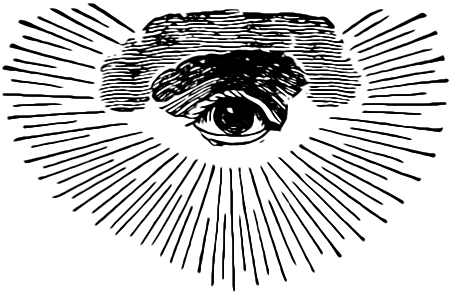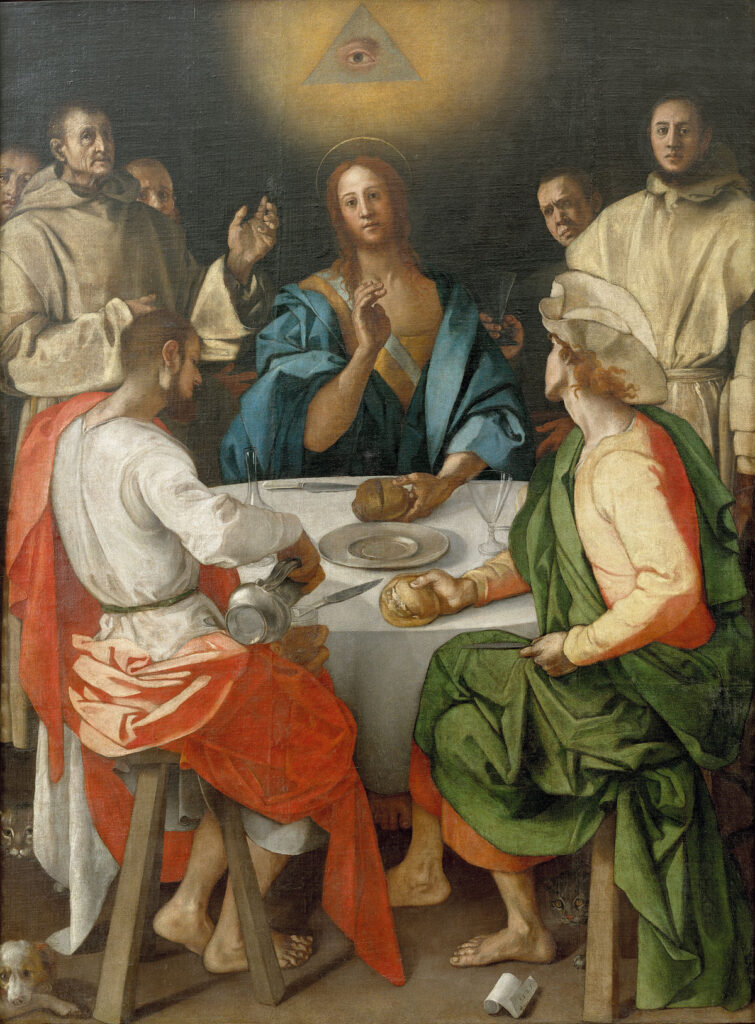Throughout history, people have used visual symbols and emblems to represent deeper meanings and values. In Freemasonry, our journey towards self-improvement and growth is often represented through symbols, stories, and practices that help to unite us through shared values and experiences. We have previously explored the symbols of Masonic coins, the Blazing Star, and the Beehive. Join us as we explore the significance of the ‘Eye’ throughout art and history, and how the Eye of Providence connects to the Masonic experience.

Historical Origins and References
Cultures throughout the world have referenced or represented ‘eyes’ to convey meaningful values. As far back as Sumerian civilization (4500 – 1900 BCE), enlarged eyes were used as a sign of watchfulness and enlightened thinking. Representations of eyes in Egyptian culture and ancient hieroglyphics often referred to the story of Horus. According to Egyptian mythology, the god-king Horus had his eye cut out in a battle with his uncle Set. He later healed his eyes with the help of Thoth, and this culture interpreted the eye as a protective image that embodied the ability to grow, heal, and overcome.
These more ancient references to ‘eyes’ appear in re-interpreted ways later in time. Historical records indicate early representations of the Eye of Providence in Renaissance art as an embodiment for God or a higher entity. Paintings like Pontormo’s Supper at Emmaus, depicted the Eye of Providence as a divine reference. Historians and social scientists describe the use of this symbol as a result of the Renaissance period, where a revitalized interest in deeper thought was taking place. The eye was a reminder to be open, aware, and mindful of a higher presence.

In 1593, the Eye of Providence appeared in a source known as the book of emblems, Iconologia. Written by Cesare Ripa, this book was highly influential and packed with references to Egyptian, Greek, and Roman emblematic personifications. Written descriptions taken from oral history and ornate illustrations were used throughout the book. Orators, artists, poets, and enlightened thinkers referenced this text to find symbols that would represent various virtues, vices, passions, and sciences. Symbols have guided people throughout all of time, providing a deeper meaning and representation for life, values, and character.
Masonic Meaning: The Eye of Providence
One of the earliest appearances of the Masonic All Seeing Eye is found in a personal seal of Bro. Robert Moray (1609-1673). Bro. Moray was known as one of the founders of modern Freemasonry in Great Britain, a Scottish soldier, and natural philosopher. Historians have studied a partial wax impression of the seal depicting a circle with an eye at the center, and rays radiating around the circumference. Despite the lack of certainty, many historians suggest a clear connection to the Eye of Providence.
The connection of the Eye of Providence to Freemasonry in the United States emerged when Thomas Smith Webb wrote and published his book, The Freemason’s Monitor, or Illustrations in Masonry, in 1797. This book had a significant impact on Masonic ritual in America, and especially of York Rite. Before this publication, the Eye was considered an emerging symbol in the Craft.
The symbol of the all seeing eye serves as a reminder to Freemasons of the watchfulness of the Great Architect. Our brotherhood is held to a high moral standard, dedicating our lives to community, self-improvement, and seeking light. As we commit to Brotherly Love, Relief, and Truth in all that we do, we have these symbolic reminders that surround us, reminding us of where our values lie. Thus, the Eye of Providence reminds us of the need for our actions to be just and for us to live humbly and in harmony with all creation.